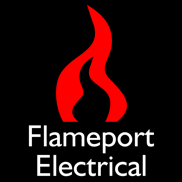Ring Circuits - Adding a socket outlet (2)
There are three ways of adding a socket outlet to a ring circuit. The most common is to connect it as a spur, and this can be done in two ways. Alternatively, the ring can be extended.
Spur using a junction box
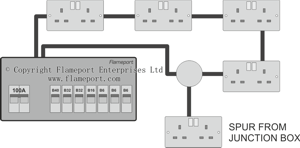 If there is no socket outlet nearby, an alternative is to use a junction box. This is similar to the previous method, but instead of connecting to a socket, a junction box is connected into the ring and the spur cable attached there.
If there is no socket outlet nearby, an alternative is to use a junction box. This is similar to the previous method, but instead of connecting to a socket, a junction box is connected into the ring and the spur cable attached there.
Junction box wiring
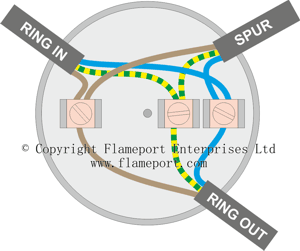
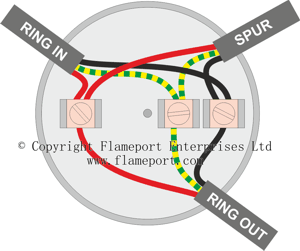 A three terminal, 30A junction box is required. Details shown below in new and old colours.
A three terminal, 30A junction box is required. Details shown below in new and old colours.
Note that junction boxes do not generally have labelled terminals, so you do not have to use the exact arrangement here.
The fact that one terminal is spaced further apart than the others has no electrical relevance - it is simply to allow space for the cover fixing screw.
If you use this method, the junction box must remain accessible. Hiding it under your laminate flooring or plastering it into the wall is NOT acceptable.
Junction boxes and the cables going to them must be securely fixed - do not leave the box hanging on the ends of the cable.
Spur Limitations
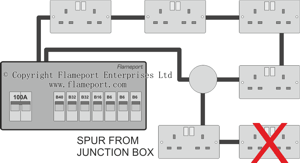 Only one socket outlet can be connected to a spur. (This can be a single or double outlet). Connecting a further outlet is NOT permitted, as this could overload the single cable supplying it.
Only one socket outlet can be connected to a spur. (This can be a single or double outlet). Connecting a further outlet is NOT permitted, as this could overload the single cable supplying it.
Each socket outlet or junction box on the ring can only have one spur connected. Trying to connect two or more is not only very difficult due to the number of wires involved, it can also result in an abnormally high load at that point in the ring.
The number of spurs on the ring must not exceed the number of other socket outlets. If for some reason you need a large number of spurs, it is time to replace the whole circuit rather than keep adding to it.
30A box on a 32A circuit breaker?
Although junction boxes are typically made in 30A versions, this is only because historically, most socket outlets were connected to 30A rewireable fuses.
The majority of 30A junction boxes have brass terminals which are significantly larger than the wires which will be connected in them. There is no problem with using '30A' boxes on a 32A circuit.
At least one manufacturer makes junction boxes which contain tiny 'chocblock' type connections inside. Not only are these more expensive, they are also far more difficult to use, and the terminals contain far less metal than the usual type.
